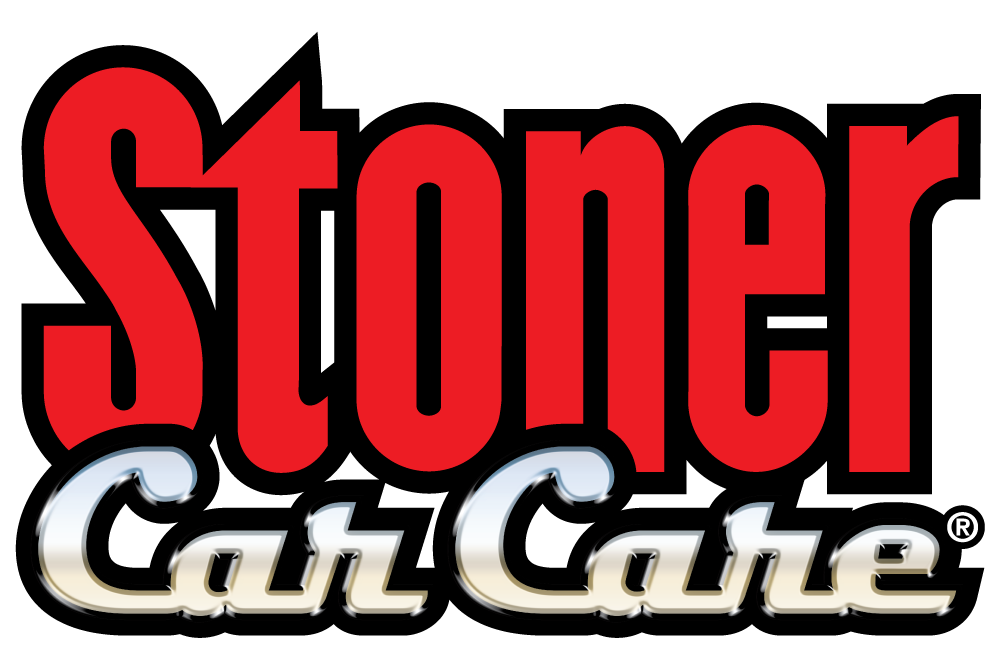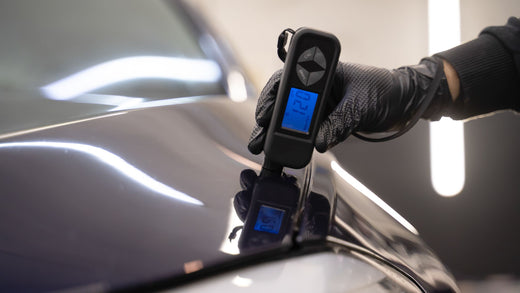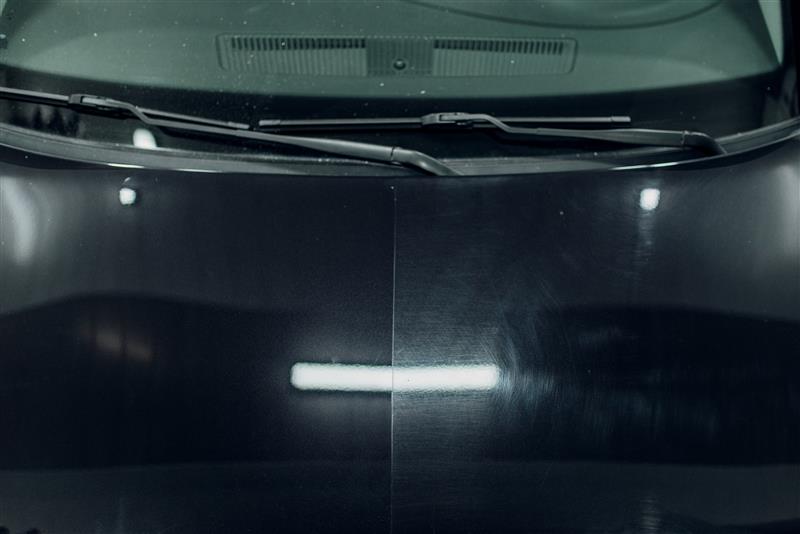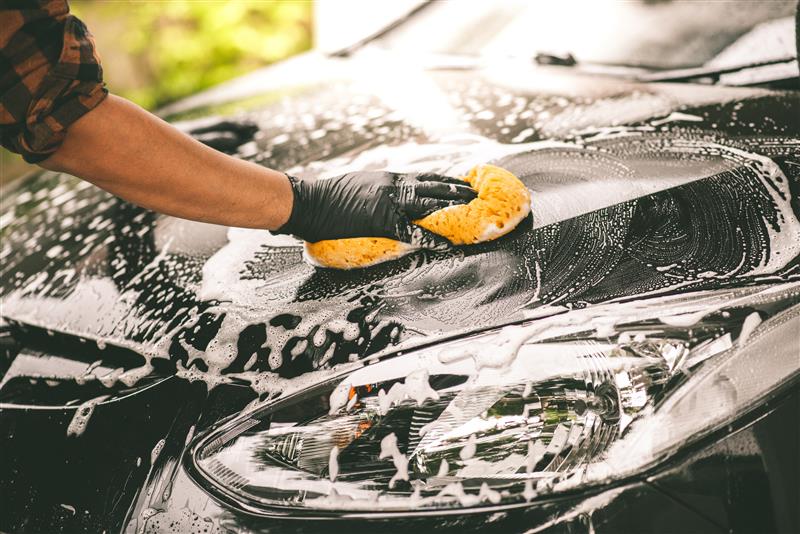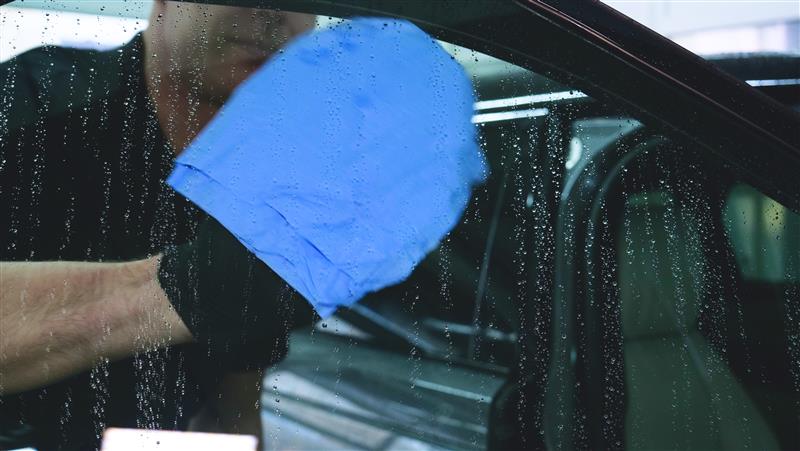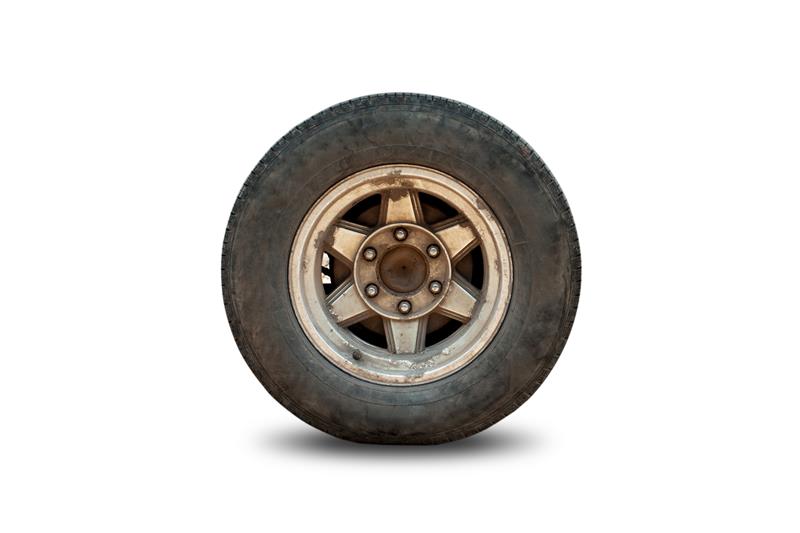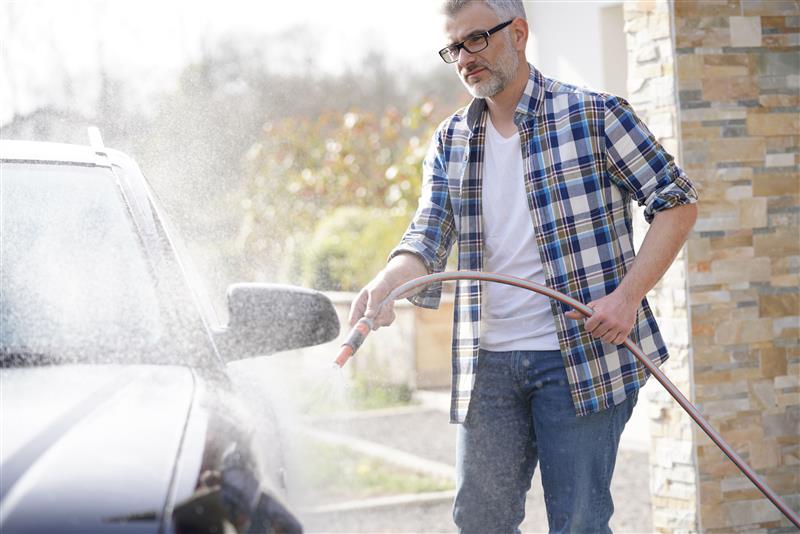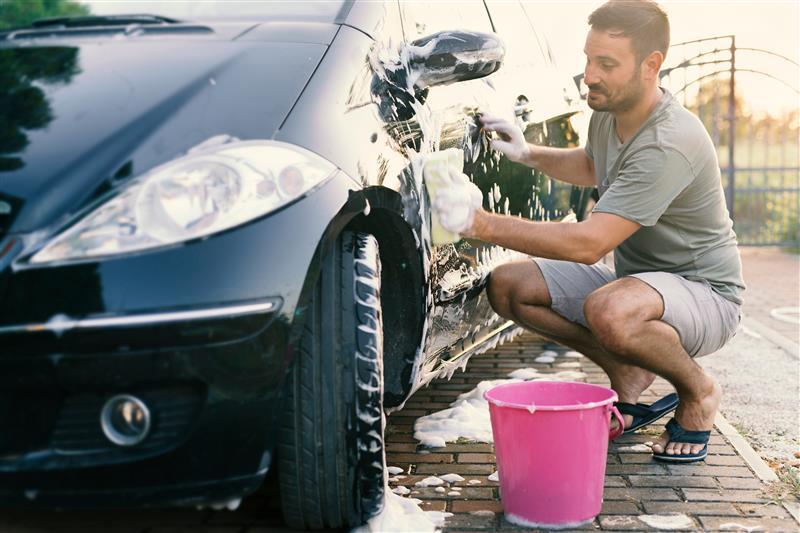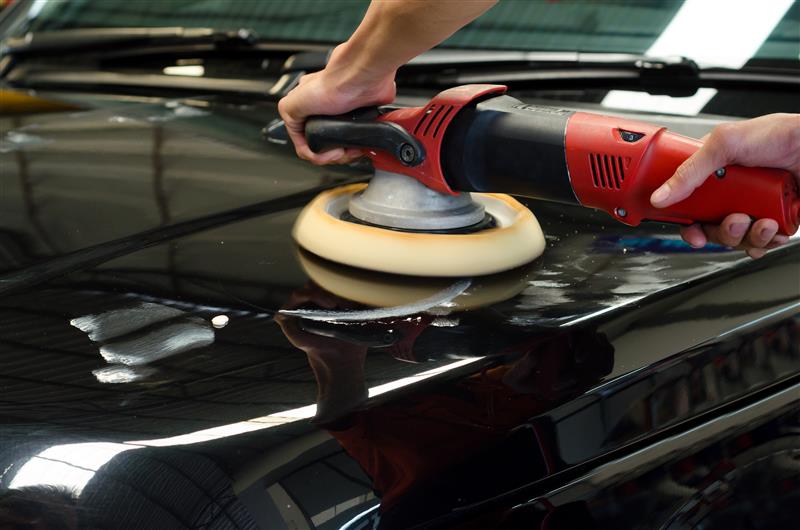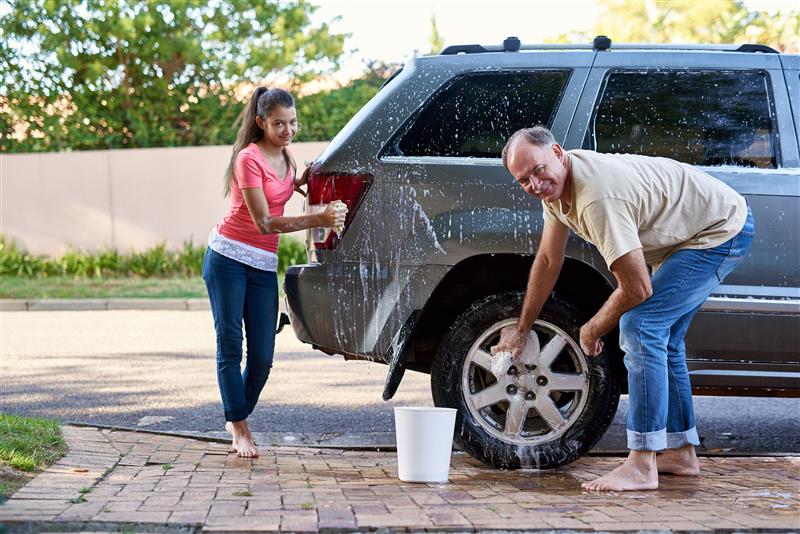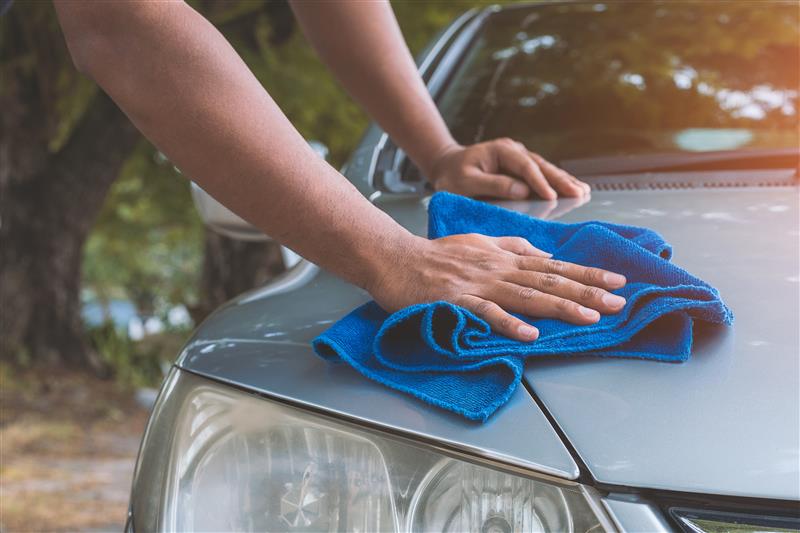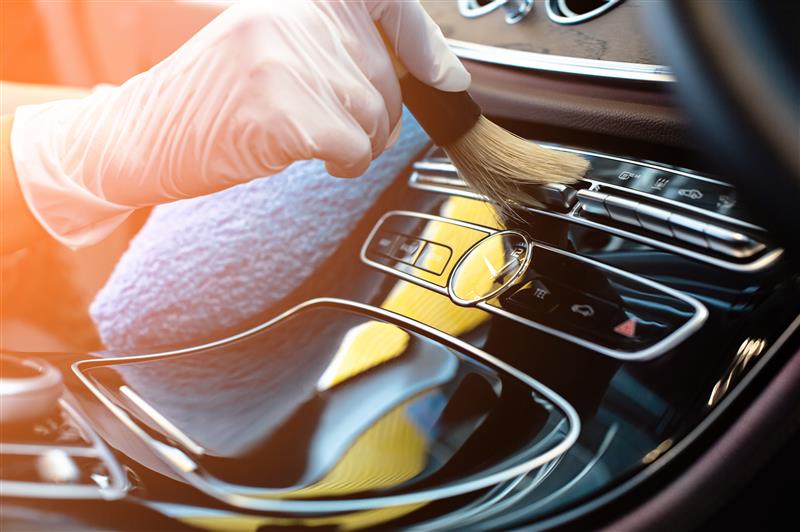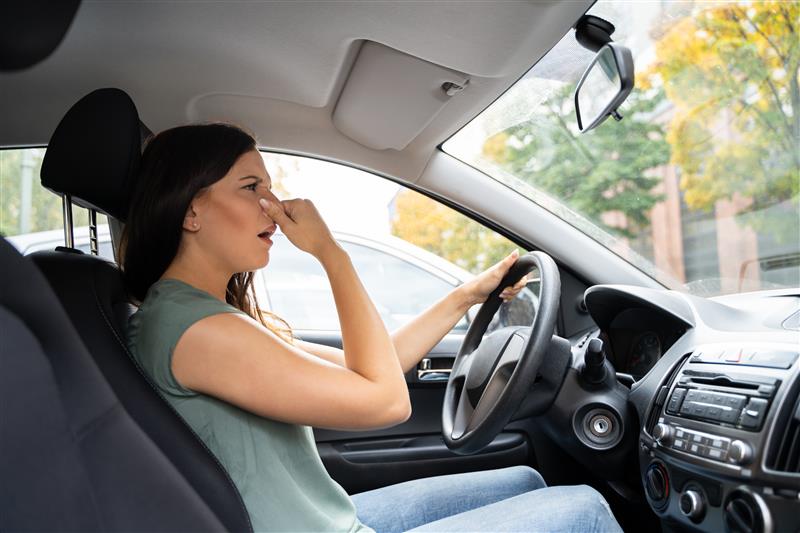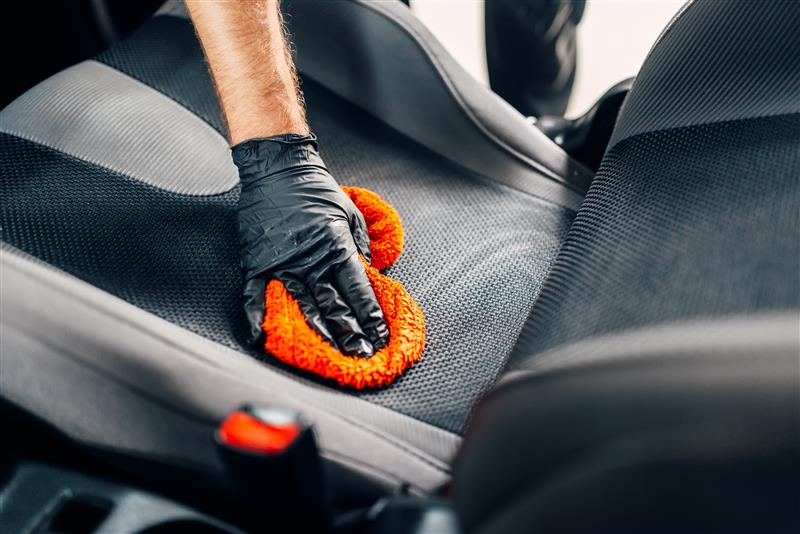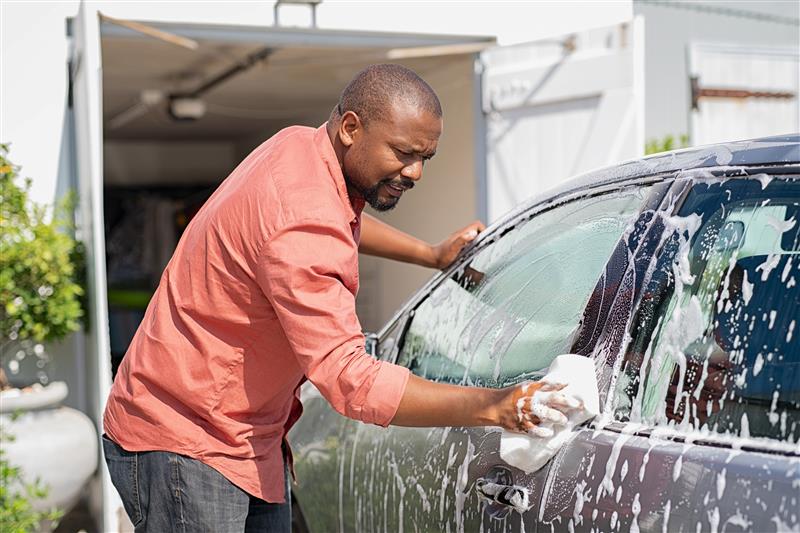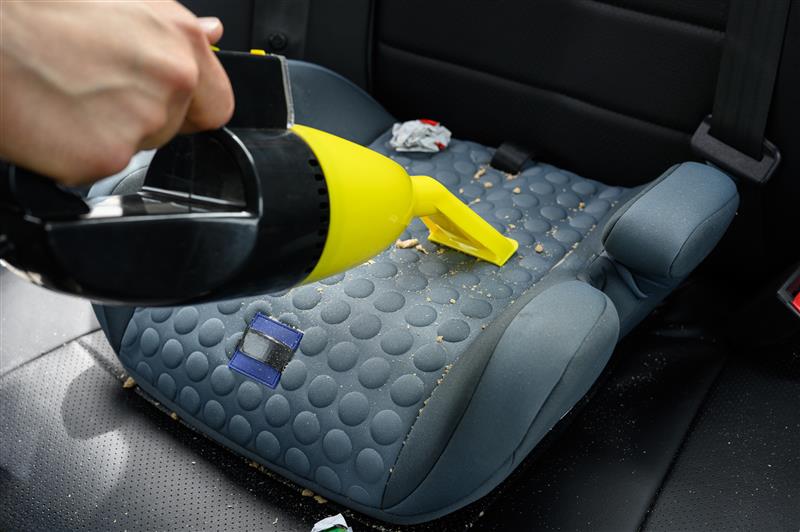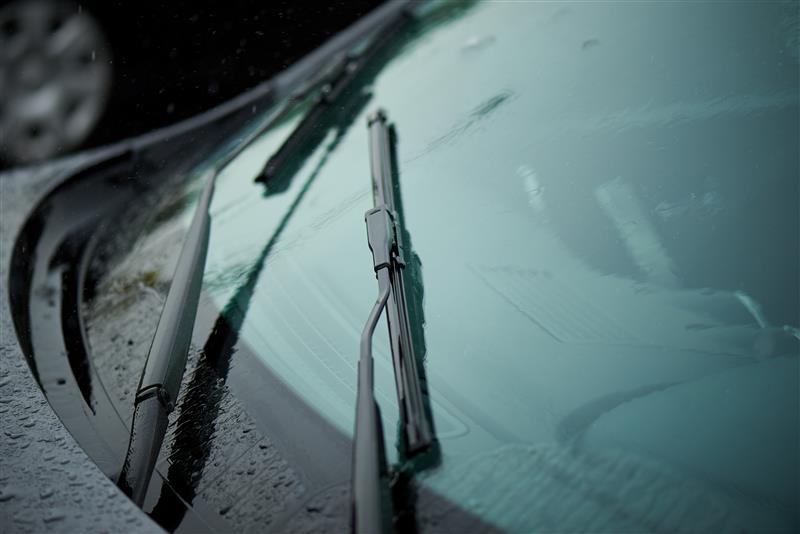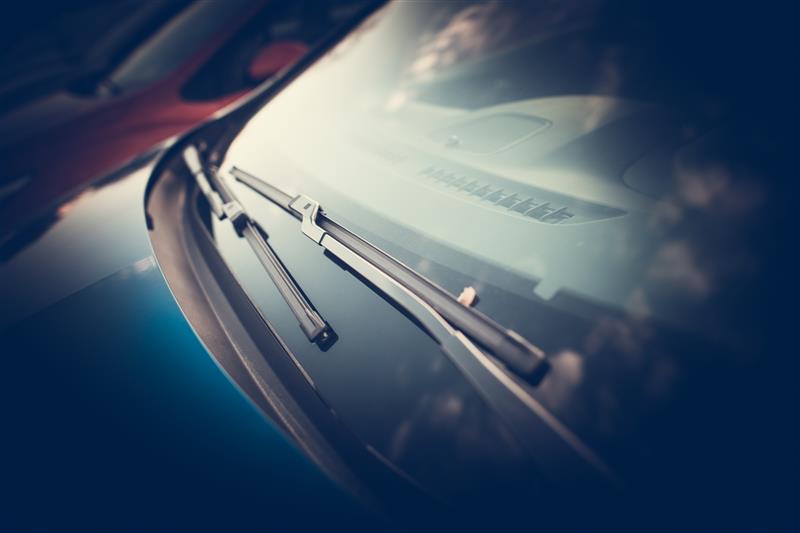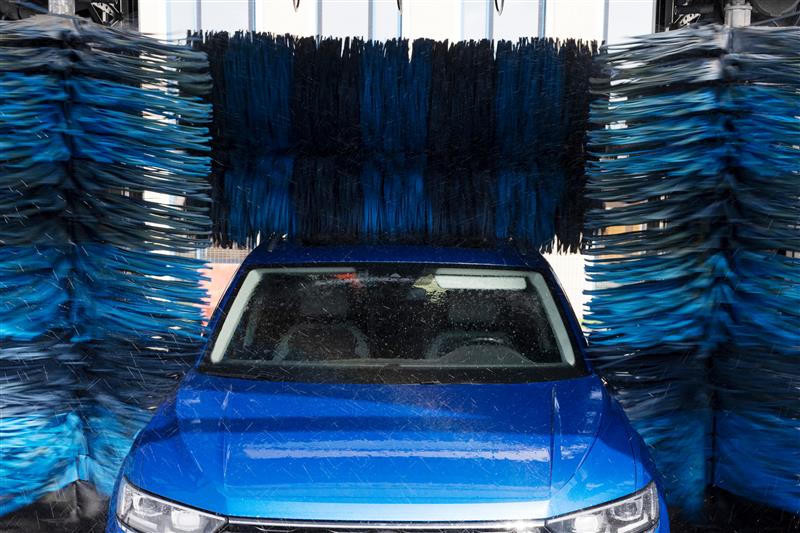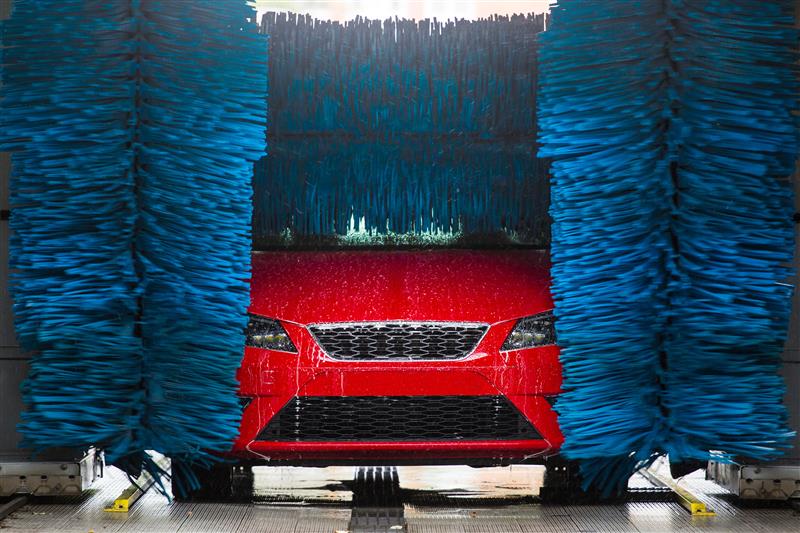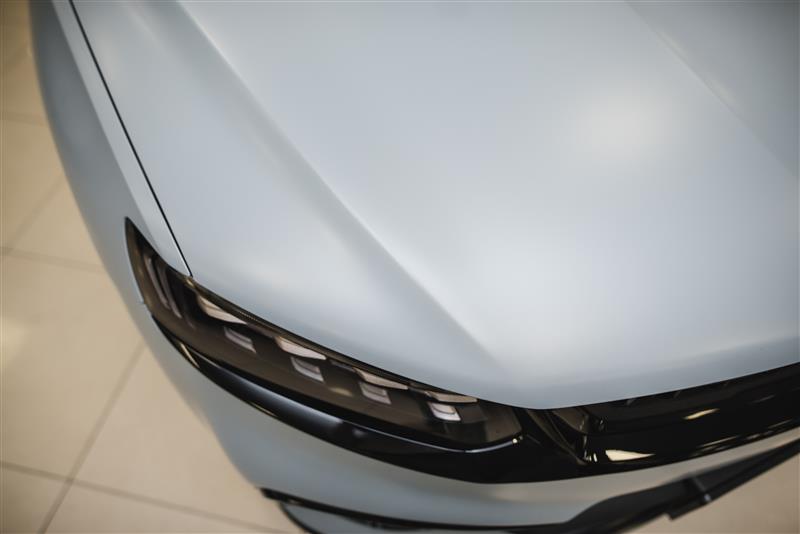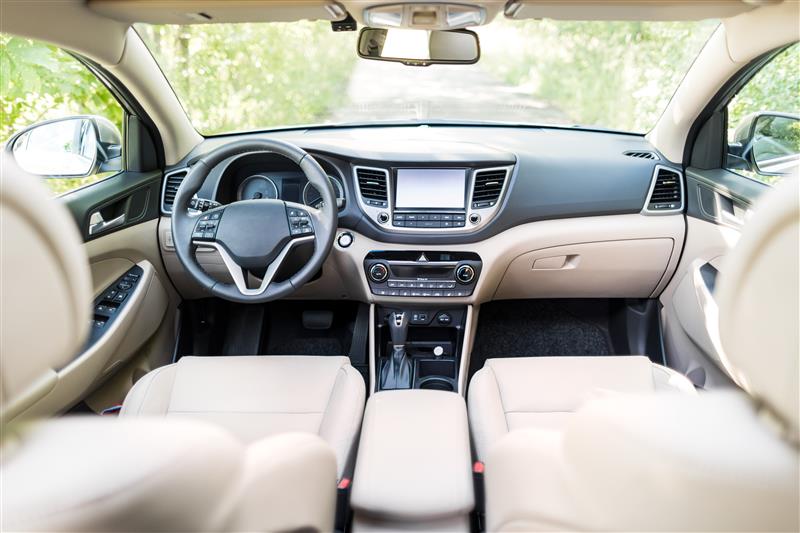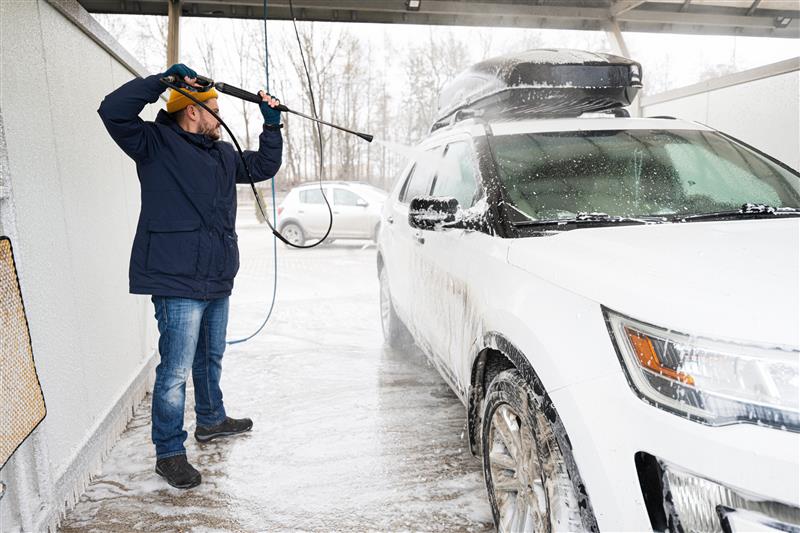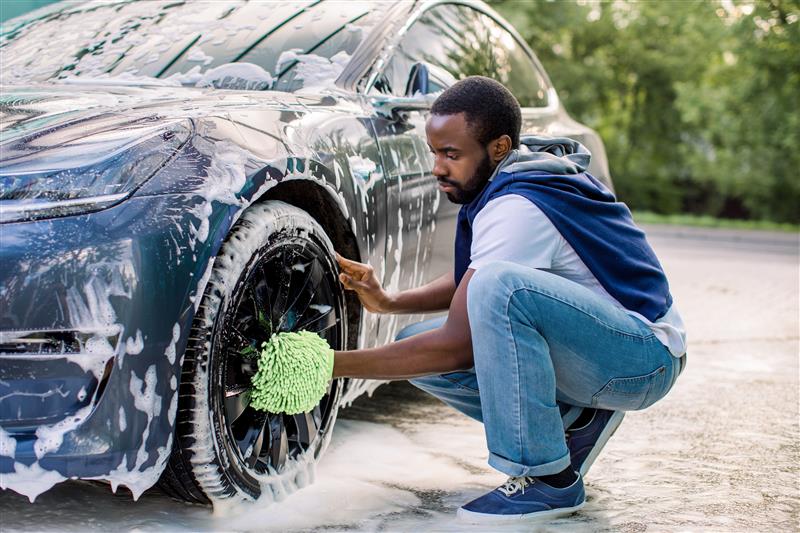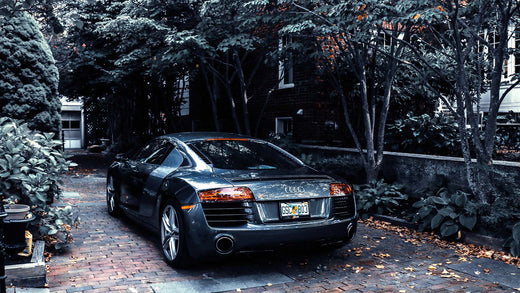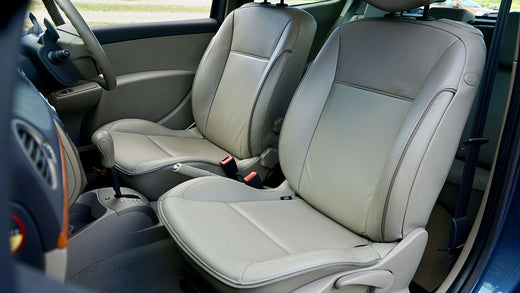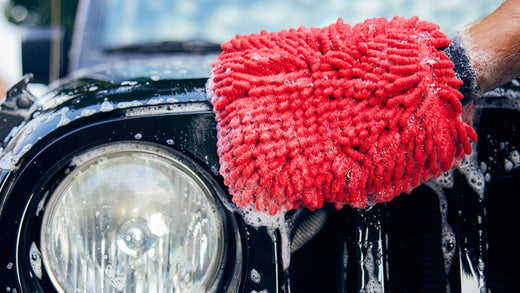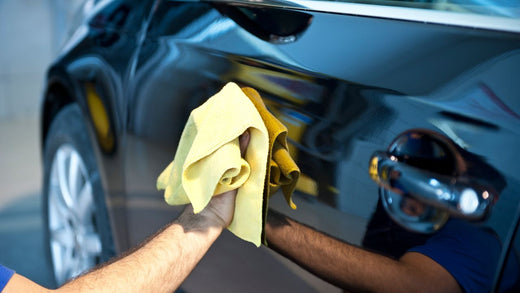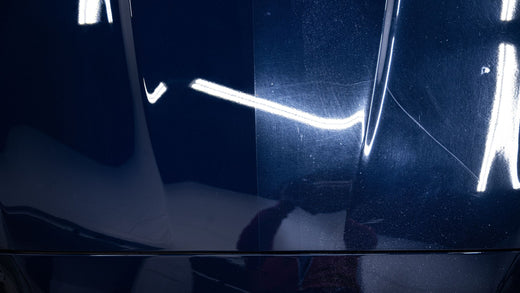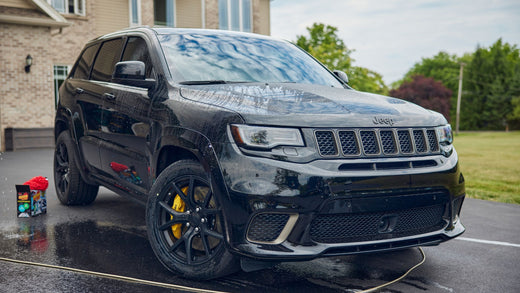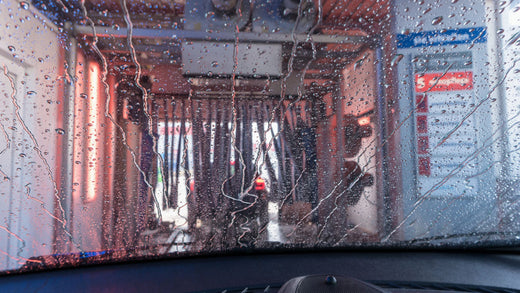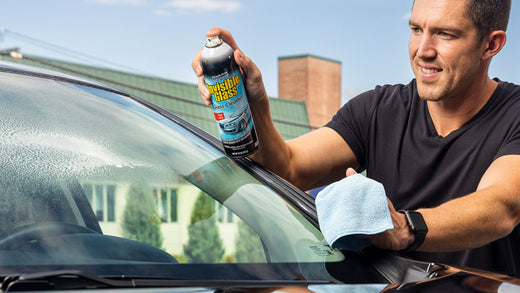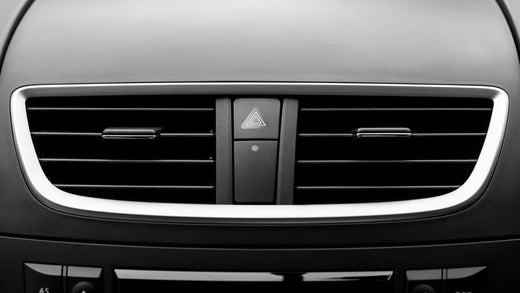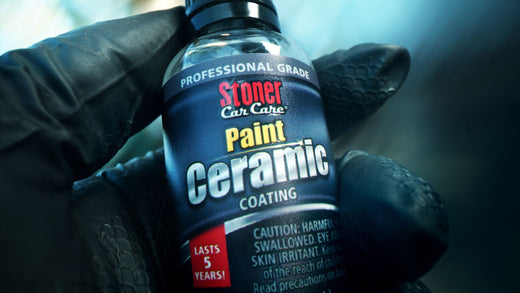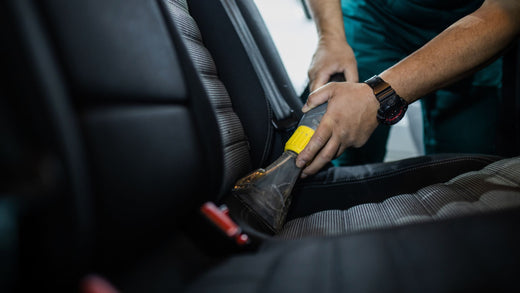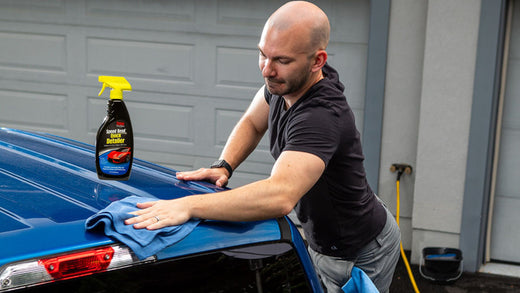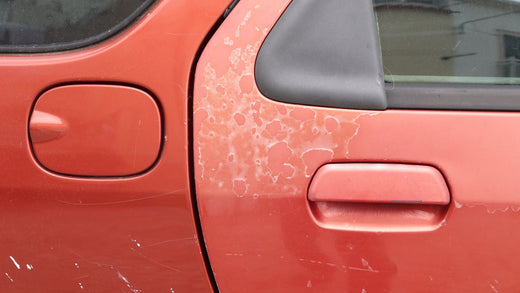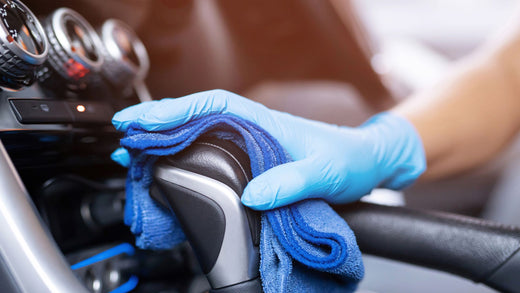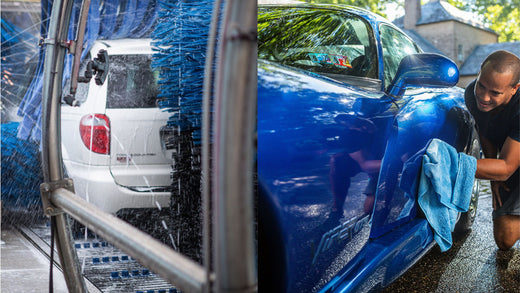Holiday shopping just got easier with free shipping on all orders. No code required.
Your car's exterior is the protective surface that battles daily against weather, dirt, and time. So, when the clear coat starts to peel, it's not just an issue of cosmetics — it's a chink in your car's armor that leaves its paint vulnerable. But here's the good news: You can repair and even prevent clear coat peeling with some know-how and the proper materials. This guide breaks down the process into manageable steps. We'll also share insider advice to keep your car looking as stunning as the day you drove it off the lot.
To fix the peeling clear coat: Identify the issue, clean and prep the surface, sand the affected area, prepare for painting, and apply a clear coat.
Identify the Issue
Clear coat peeling occurs due to various factors, including UV exposure, oxidation, improper application, and environmental contaminants. Before tackling the problem, assess the extent of the damage and pinpoint its root cause to help tailor your approach for effective restoration and long-term prevention.
The reason behind your car’s clear coat peeling could be anything from too much sunbathing (UV damage) to a less-than-perfect paint job in the past. Knowing precisely why it’s happening is essential because it changes how you’ll fix it. If the sun’s to blame, you will want to look into UV-resistant treatments. If it was a lousy paint application, getting a pro to take another crack at it might be the way to go. Or if it’s just the world throwing dirt and grime at your car, a thorough clean followed by a protective seal might do the trick.
It’s all about matching the fix to the problem to make your car look as good as new and keep it that way. Diagnose your car’s clear coat issue so you can apply the perfect remedy.
Clean and Prep the Surface
Start by thoroughly washing your car using a gentle car wash soap and water. Pay special attention to the affected area, ensuring it's free from dirt, grime, and debris. Once clean, use rubbing alcohol or a grease remover to eliminate any stubborn contaminants that could hinder the repair process. A clean surface is essential for optimal adhesion and smooth results. If you need a safe, effective cleaner to help prepare your vehicle for repair, consider Stoner Ceramic Prep Wash. Our Prep Wash is pH-balanced and safe for all automotive surfaces to effectively strip off sealants, waxes, or glazes and leave a residue-free surface.
Sand the Affected Area
Using automotive sandpaper (starting with 1500 grit and progressing to 2000 grit), carefully sand the peeling clear coat until the surface feels smooth to the touch. Be cautious not to apply too much pressure, as you don't want to damage the underlying paint. The goal is to create a uniform and level surface for the subsequent clear coat application. Take your time and periodically check the progress to avoid over-sanding.
Prepare for Painting
After sanding, thoroughly clean the area again to remove any residual dust or debris. Use masking tape to mask off surrounding areas and protect them from overspray during the painting process. Proper masking ensures precise results and minimizes the risk of unintentional damage to unaffected areas.
Apply Clear Coat:
Follow the automotive clear coat spray can instructions carefully. Shake the can vigorously to ensure proper mixing of the contents. Hold the can approximately 8-12 inches from the surface and apply light, even coats of clear coat, allowing each coat to dry thoroughly before applying the next one. Multiple thin coats are preferable to a single heavy coat, as they promote better adhesion and prevent runs or drips. Remember to overlap each pass slightly to achieve uniform coverage.
Polish and Protect
Once the clear coat has dried completely, it's time to refine the surface and enhance its gloss. Use a polishing compound and a clean microfiber towel to buff the repaired area using gentle circular motions to blend the repaired section seamlessly with the surrounding paint, leaving a smooth and glossy finish. Finally, a layer of car wax or sealant should be applied to provide additional protection and prolong the lifespan of the repair.
Preventive Measures
In addition to addressing the existing clear coat issue, it's essential to implement preventive measures to safeguard your car's finish in the future. Here are some tips:
Regular Maintenance
Establish a regular car care routine, including washing, waxing, and detailing, to keep your car's exterior in top condition.
Parking Protection
Whenever possible, park your car in a covered garage or shaded area to shield it from the sun's harmful UV rays. If parking outdoors is unavoidable, consider using a car cover for protection.
Avoid Abrasive Cleaning
Use gentle cleaning products and techniques to avoid scratching or damaging the clear coat. Opt for soft microfiber towels and non-abrasive cleaning agents to preserve the integrity of your car's paintwork.
Inspect Regularly
Conduct periodic inspections of your car's exterior to detect any signs of damage or peeling early on. Prompt action prevents minor issues from escalating into major repairs.
Lasting Shine: Maintaining Your Car's Flawless Finish
So there you have it — a comprehensive roadmap to fixing that pesky clear coat peeling and keeping it from coming back. Repairing your car's clear coat isn't just about aesthetics; it’s about safeguarding your vehicle against the elements and ensuring it continues to serve you well on the road. By following these steps and adopting a proactive approach to maintenance, you're restoring your car's shine and investing in its future. With these tips in your arsenal and a little regular care, your vehicle will continue turning heads and cruising smoothly for many miles. Enjoy the ride!
Related posts
Learn how to prevent swirl marks on your car’s paint with proper washing, drying, and polishing techniques for a smooth, lasting, showroom-quality shine.
How to Safely Wash a Black Car Without Scratching the Paint
Learn how to wash a black car safely and protect its glossy finish. Avoid swirl marks, water spots, and scratches with smart techniques and the right tools.
How to Clean Tinted Car Windows Without Damaging the Film
Learn how to safely clean tinted car windows without streaks or damage. Discover tint-safe products, techniques, and what to avoid for long-lasting clarity.
Is Tire Blooming Bad? What Causes Brown Tires and How to Clean Them
Brown tires? It’s likely tire blooming. Learn what causes it, if it’s harmful, and how to clean and prevent it for a deep black finish.
How Long Do Car Washes Take? A Quick Guide to Every Type of Wash
How long does a car wash take? Compare automatic, touchless, hand wash, and detailing times. Learn time-saving tips to wash your car faster and safer.
10 Essential Steps to Wash Your Car the Right Way
Wash your car like a pro—no swirls, no streaks. This 10-step guide shows you how to protect your paint, boost shine, and get that just-detailed look.
How to Remove Scratches from a Black Car
Learn how to fix scratches on black paint, from swirl marks to deeper damage. Step-by-step tips to restore shine and protect your car’s finish.
Is It Bad to Wash Your Car Too Often? The Truth About Frequent Car Washing
Think washing your car too often ruins the paint? Think again. Learn why frequent washes protect your vehicle—when done right with the proper tools.
What’s the Best Thing to Clean Your Car With? Tools, Products, and Tips That Work
Washing your car the right way starts with the right tools — and nothing beats a chenille wash mitt paired with the two-bucket method for a scratch-free, showroom-worthy shine.
How to Detail Your Car at Home: Step-by-Step Guide for a Pro-Level Clean
Bring your car back to life with this step-by-step detailing guide. Learn how to clean, polish, and protect your vehicle for pro-level results at home.
How to Get Rid of Bad Smells in Your Car: A Step-by-Step Guide
Learn how to remove bad smells from your car for good. Discover the top causes of car odors and step-by-step tips to eliminate and prevent them naturally.
How to Clean Fabric Car Seats: Easy Tips for Pro-Level Results
Clean fabric car seats like a pro with these simple steps! Learn how to remove stains, refresh upholstery, and extend your car’s interior life—easily at home.
Hot or Cold Water for Washing Your Car? What's Best for Your Paint
Hot, cold, or lukewarm? The right water temperature makes a difference when washing your car. Learn the pros and cons to keep your car clean without damage.
How to Clean a Child’s Car Seat: Simple Steps for Safe, Spotless Results
Keep your child’s car seat clean, fresh, and safe with these easy steps. Remove stains, sanitize surfaces, and maintain hygiene for every ride with confidence!
How to Clean Vomit Out of Your Car: Fast, Effective Steps to Eliminate Stains & Odors
Learn how to effectively remove vomit from your car using Lift Off Probiotic Stain & Odor Eliminator, a microbial cleaner that breaks down stains and eliminates odors.
Conventional vs. Beam Wipers: Which Type Is Right for Your Car?
Conventional vs. beam wipers: Which is right for you? Compare performance, durability, and cost to find the best option for clear visibility in any weather.
How to Change and Replace Windshield Wipers
Ensure clear visibility and safer driving by replacing your windshield wipers. This guide covers wiper types, step-by-step installation, and maintenance tips.
How to Remove Hard Water Spots from Car Windows
Hard water spots on car windows reduce visibility and damage glass. Remove them with specialized cleaners and prevent future buildup with proper maintenance.
Are Automatic Car Washes Safe for Your Car’s Paint?
Are automatic car washes safe for your car? Learn the risks, explore safer options like touch-free washes, and discover why hand washing is the best choice.
How to Maintain Matte and Satin Car Paint: Essential Tips for a Flawless Finish
Keep your matte or satin car paint flawless with proper care! Learn expert tips, must-have products, and maintenance steps to preserve its sleek, non-glossy finish.
What Products Are Safe to Use on Your Car's Interior?
Protect and enhance your car’s interior with safe, effective cleaning products. Achieve professional results on leather, glass, vinyl, and more!
Is It Safe to Wash Your Car When Temperatures Are Below Freezing?
Winter presents unique challenges for car care. If left untreated, road salt, grime, and slush can wreak havoc on your vehicle’s paint and undercarriage. Regular washing is critical to protect your car during these colder months, but what about when the temperatures dip below freezing? The good news is that it’s safe to wash your car in freezing conditions—with the proper precautions. Here’s what you need to know to navigate winter car washing effectively and keep your vehicle in top shape.
Top 10 Must-Have Products for Basic Car Detailing
In this guide, we'll walk you through the essential products to get your car looking its best, from cleaners and polishes to tools and accessories. Let’s dive into the must-have items for basic car detailing.
How to Clean Tree Sap Off Your Windshield
Refresh Your Ride: The Ultimate Guide to Cleaning Car Seats
Scratch-Free Car Wash: Your Guide to a Flawless Finish
A clean car enhances its appearance, maintains value, and protects the paint. You can wash your vehicle confidently with the proper techniques and products, avoiding scratches and achieving a spotless shine. This guide will explain how to clean your car safely and effectively, ensuring a flawless finish every time.
How Long Does Car Detailing Take? A Breakdown of the Process
What is Paint Correction, and Do I Need It?
When it comes to keeping your vehicle’s exterior looking pristine, the term “paint correction” often comes up. But what exactly is paint correction, and why might you need it? In this post, we'll break down the paint correction process, show you how it works, and help you decide if it's the right step to maintain your vehicle's showroom shine.
Car Washing vs. Car Detailing: Understanding the Difference and Why It Matters
Keeping your vehicle in top condition requires more than just a simple wash. Many use the terms "washing" and "detailing" interchangeably, but these two processes differ. Both play crucial roles in maintaining your car’s appearance but involve varying levels of effort, products, and techniques. In this blog, we’ll break down the key differences between washing and detailing and show you how Stoner Car Care products can enhance both, helping you keep your car looking its best.
Drive-Through Car Washes: Safe or Risky for Your Car?
As a car owner, keeping your vehicle pristine is likely a top priority. Drive-through car washes offer a convenient option for maintaining your car's cleanliness, but many wonder if they are safe for their vehicle. In this blog, we'll explore this question in detail, examining the potential risks and benefits of using drive-through car washes and providing tips on minimizing any possible damage.
What is the Best Way to Clean Car Windows Without Streaks?
Have you ever peered through streaky car windows, unsure if you were seeing road grime or leftover cleaner? You're not the only one. Washing car windows seems simple enough, but getting that perfect, streak-free shine can be tricky. Those annoying water spots and streaks aren't just eyesores - they can make it harder to see while driving, which isn't great for safety. But don't worry, we've got your back. In this guide, we'll discuss the best ways to get your car windows sparkling clean. We'll explore what works, what doesn't, and how to get results that rival a professional detailing job.
Fresh Air Ahead: How to Clean Your Car’s Air Vents for Better Air Quality
Keeping your car's air vents clean is critical to maintaining clean air inside your vehicle. Over time, dust, pollen, and other particles can build up, leading to unpleasant odors – and potentially affecting your health. With a few easy steps and the right products, you can ensure your air vents are spotless, and your drive is more enjoyable. Let’s dive into a simple and effective way to maintain your cabin’s air quality.
To Coat or Not to Coat: Is it Worth Getting a Ceramic Coating for My Car?
When it comes to maintaining the pristine condition of your car, paint protection is a top priority for many car owners. One popular method gaining traction in the automotive world is ceramic coating. But is it worth the investment? In this blog post, we’ll dive into the details of ceramic coatings, their benefits, and whether they are the right choice for your vehicle.
How to Start a Car Detailing Business: A Comprehensive Guide
Diving into the car detailing world can be an exciting and lucrative journey for car enthusiasts who love making vehicles shine. As the demand for professional car care grows, aspiring entrepreneurs have a ripe opportunity to make their mark. This guide will steer you through the critical stages of launching your car detailing business – from crafting a solid plan to putting that plan into action. Let's get your engines revving and gears shifting towards a successful business venture!
Gloss Like a Boss: Expert Techniques for Waxing Your Car
Waxing your car does more than just boost curb appeal – it's vital for preserving your vehicle's exterior. A well-waxed car doesn't just turn heads; it also stands a better chance against environmental threats like UV rays, rain, and road pollutants. Ideal for both auto enthusiasts and those aiming to keep their ride in tip-top shape, mastering the proper waxing techniques is key. Join us as we dive into the best practices for car waxing, sharing step-by-step guidance to ensure your vehicle sports a flawless, lasting gloss.
How Can I Protect My Car's Paint from Fading?
Your car's paint does more than just make it look good; it acts as a vital shield against environmental assaults. Yet, despite its importance, the vibrant finish can degrade over time due to the relentless sun, pollutants, and general wear and tear. This not only affects your vehicle’s aesthetic appeal but also its overall value. In this blog, we'll explore several proactive measures you can take to protect your car’s paint from fading, ensuring it stays as fresh and radiant as the day you drove it off the lot.
How to Remove Odors from Your Car Interior
Unleash a Cleaner Car: How to Get Rid of Pet Hair
Anyone who's ever had a pet knows the joys they bring: endless affection, companionship, and, unfortunately, a whole lot of pet hair. The fur will fly whether you take a quick trip to the park or an extended vacation drive, finding its way into every corner of your car, from the back seat to the carpets. Happily, you don’t need to leave Fido at home to have a clean ride. Clearing out pet hair can be quick and easy with the proper techniques and some top-notch car detailing products. This guide will walk you through the best ways to keep your vehicle looking spotless, no matter how furry your companion
Choosing the Best Wash: Automatic Car Washes vs. Hand Washing
Keeping your car looking spotless is essential, but deciding between an automatic car wash and hand washing can be tricky. Each method offers unique benefits and drawbacks, influenced by your schedule, car needs, and even your personal touch. In this guide, we’ll dive deep into the pros and cons of automatic car washes and hand washing, providing the insights you need to make the best choice for maintaining your vehicle’s sparkle and health. Whether you're pressed for time or need a detailed cleaning, understanding the options will help ensure your car always looks its best.
